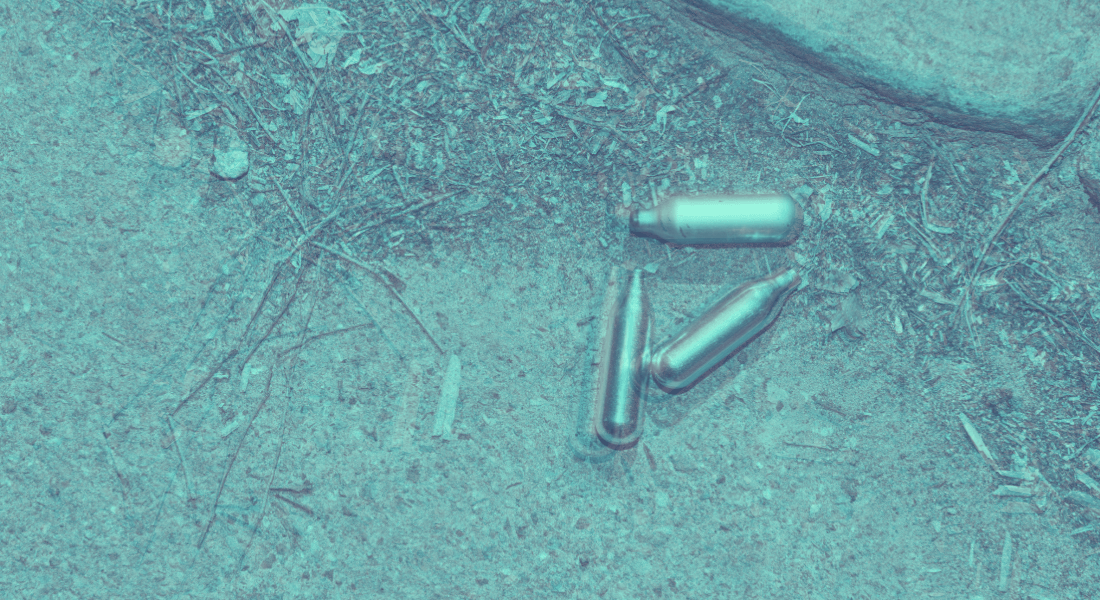Forensic blood analysis can reveal whether drivers are high on laughing gas. Researchers hope the method can help the police.

Once again, recreational use of laughing gas has attracted media attention in Denmark. This time, however, focus is on drivers who have inhaled laughing gas before getting behind the wheel - with potentially lethal consequences.
So says PhD Student of Forensic Chemistry Angelica Ørregaard Lindholm, who is responsible for the new study on driving under the influence of laghing gas at the University of Copenhagen.
"Laughing gas can cause disorientation, hallucinations, dizziness, and fainting. So, laughing gas and driving is a dangerous combination," Angelica Ørregaard Lindholm explains and adds that it is a common misconception that the drug does not show up on tests.
Ultimately, we hope our method and the results of the clinical trial will be able to help the police get the proof they need in cases of laughing gas abuse and driving
In the new study, Angelica Ørregaard Lindholm and her colleagues show that laughing gas can be detected in a simple blood test.
"We have analysed 62 blood tests, 52 of which were positive for laughing gas. The police have provided the tests, which are made when they have reason to suspect someone of being under the influence of laughing gas," Angelica Ørregaard Lindholm says.
After publishing the study, the researchers have continued analysing tests. Of the 103 tests they have analysed since 2020, 90 have been positive.
Since 1 July 2023, it has been illegal, with a few exceptions, to carry laughing gas in public spaces, and this includes cars in public spaces. Being high on laughing gas is not illegal, though.
It was discovered in the UK in the early 1800s and soon became a popular upper-class party drug carried in small silk bags. In the 19th century, doctors started using the gas as an anaesthetic.
Today, laughing gas is i.a. used by dentists and during labour. When used for medical purposes, it is mixed with oxygen, significantly reducing the risk of side effects.
There are no statistical data on laughing gas use and driving, but the police have said to DR that they see more and more cases involving drivers suspected of being high on the drug.
Laughing gas is also known as nitrous oxide and can be bought in small or large cartridges intended for whipped cream syphons.
"Inhalation of laughing gas can induce short-term euphoria and a sense of weightlessness," Angelica Ørregaard Lindholm says.
It is used as a painkiller by dentists and during labour, and here it is safe to use. However, long-term abuse can cause permanent neurological damage.
"Nitrous oxide inactivates the vitamin B12 stores in the body, and they take time to rebuild. If you continue to use laughing gas, your body will begin to suffer from vitamin B12 deficiency, and this will damage the protective myelin sheath that surrounds the nerve fibres," Angelica Ørregaard Lindholm explains.
Method must be refined
Even though laughing gas can be detected in the blood, the researchers face several challenges before they are satisfied with the method.
"Our main problem is that the effect is brief and that the gas disappears quickly after inhalation," Angelica Ørregaard Lindholm says.
Therefore, the police must act quickly. Otherwise, the gas will not show up on the test.
"This is likely to limit the police's options. For instance, if they are in the countryside and the nearest hospital is far away, they might think that testing is futile and decide not to do the test," Angelica Ørregaard Lindholm explains.
Research from the 1970s shows that the half-life of laughing gas is five minutes. Sometimes, though, the researchers found nitrous oxide in the blood three hours after the sample was taken.
Now they want more systematic knowledge of how long laughing gas can be detected in the blood and to which extent it affects the user's ability to drive.
Therefore, the next step for Angelica Ørregaard Lindholm and her colleagues is to do a clinical trial with a group of test subjects who will be given laughing gas and asked to operate a car simulator while the researchers do a series of blood tests. The trial will be conducted together with the Centre of Head and Orthopaedics at Rigshospitalet and the Division of Transport Science at the Technical University of Denmark.
"Ultimately, we hope our method and the results of the clinical trial will be able to help the police get the proof they need in cases of laughing gas abuse and driving."
Read the full study, "Driving under the influence of nitrous oxide - A retrospective study of HS-GC-MS analysis in whole blood", in Forensic Science International.






